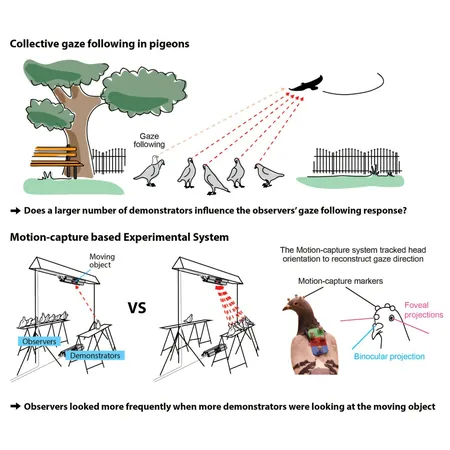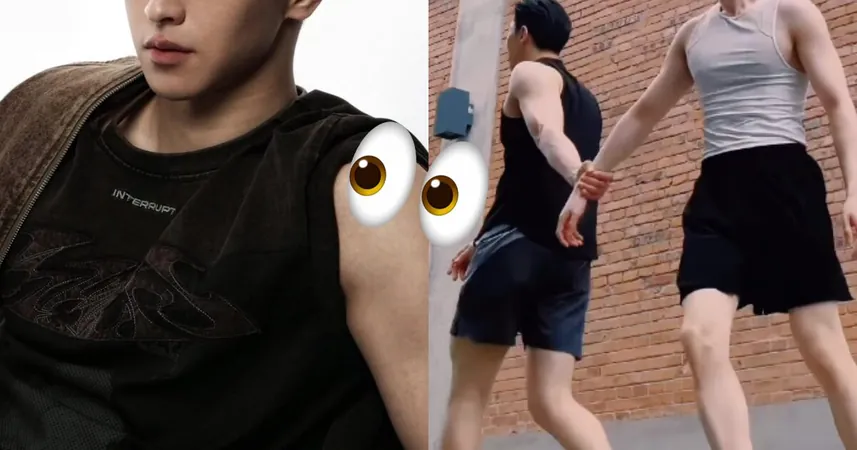
Do Pigeons Follow Each Other's Gaze? A Fascinating Study Reveals All!
2025-07-07
Author: Nur
The Power of Collective Gaze: Are Pigeons in on the Secret?
Ever noticed how people instinctively look where others are pointing? This curious phenomenon got researchers wondering: do animals, like pigeons, exhibit the same behavior? A groundbreaking study led by a team from the University of Konstanz dives into this question and explores the intriguing dynamics of gaze-following among these feathered flock-mates.
What Is Gaze-Following?
Gaze-following allows animals (and humans) to share attention and gain insight into potential opportunities or threats in their environment. As researcher Mathilde Delacoux puts it, it’s all about the shared curiosity: "I see you looking at something interesting, so I want to check it out too." This simple yet essential behavior fosters learning and safety in social species.
Insights from History: The Quorum Effect
In a classic experiment by social biologist Stanley Milgram, he demonstrated how humans tend to cluster their gazes, leading strangers to follow suit. He dubbed this the 'quorum effect,' a concept that leaves us wondering: does this principle extend to the animal kingdom?
Pigeons: A Perfect Case Study
To explore this, Delacoux and her team turned to the ever-sociable pigeon. These birds naturally form large flocks, making them ideal subjects for examining how group dynamics affect gaze-following behavior.
Inside a High-Tech Barn Experiment
In a unique setup within a high-tech barn near Lake Constance, two groups of pigeons were strategically placed—one group observed a moving object while the other group remained blind to the source of intrigue. The question remained: would the uninformed pigeons follow the gazes of their peers?
Equipped with a sophisticated camera system, researchers tracked minute head movements to see how pigeons reacted to the gaze cues. They tested various group sizes, from a single curious pigeon to flocks of three, five, or more.
Fascinating Findings on Group Behavior
The results were revealing! The pigeons did indeed follow the gazes of their fellow birds, but the effect wasn’t as pronounced as seen in other avian species. Interestingly, the number of pigeons looking in one direction mattered significantly: one solitary gaze rarely influenced others, but as more pigeons joined in, the likelihood of others following increased.
No Quorum Effect Here!
Unlike in Milgram’s study, researchers found no strict minimum number of pigeons required to spark a reaction. Instead, gaze-following exhibited a gradual incline—more pigeons looking together led to more flockmates joining in.
What Does This Mean for Pigeon Cognition?
So, what do these findings reveal about how pigeons think? Delacoux is careful not to over-interpret: "While they do respond to the gazes of others, this might just be a reflex rather than a sign of profound cognitive ability." There was no evidence suggesting they actively strategized to get a better view of the object.
The Bigger Picture: Group Behavior Unveiled
Kano elaborates on the implications: "Pigeons don’t merely mimic their companions; they adjust their gaze-following behavior based on how many peers are participating." This hints at a deeper understanding of social dynamics among pigeons, showcasing their reliance on collective cues.
As it turns out, attention drawn by multiple gazes can be powerful, not only among humans but in the avian world as well. Kano sums it up nicely: "Many animals evolved in groups. To truly grasp their communication and thought processes, we must study them in social contexts." This study opens new doors to understanding pigeon behavior and the broader dynamics of social animals.




 Brasil (PT)
Brasil (PT)
 Canada (EN)
Canada (EN)
 Chile (ES)
Chile (ES)
 Česko (CS)
Česko (CS)
 대한민국 (KO)
대한민국 (KO)
 España (ES)
España (ES)
 France (FR)
France (FR)
 Hong Kong (EN)
Hong Kong (EN)
 Italia (IT)
Italia (IT)
 日本 (JA)
日本 (JA)
 Magyarország (HU)
Magyarország (HU)
 Norge (NO)
Norge (NO)
 Polska (PL)
Polska (PL)
 Schweiz (DE)
Schweiz (DE)
 Singapore (EN)
Singapore (EN)
 Sverige (SV)
Sverige (SV)
 Suomi (FI)
Suomi (FI)
 Türkiye (TR)
Türkiye (TR)
 الإمارات العربية المتحدة (AR)
الإمارات العربية المتحدة (AR)